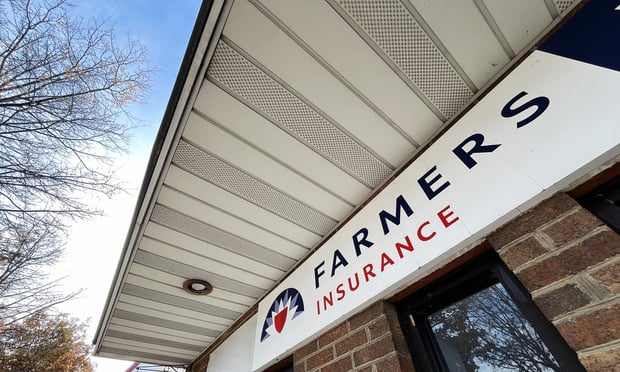(Bloomberg) -- The Atlantic should have a near-average storm season, producing four to eight hurricanes before it ends in November, according to National Oceanic and Atmospheric Administration Administrator Kathryn Sullivan.
Ten to 16 named storms are likely for the season that officially starts June 1, the agency said. A system gets a name when its winds reach 39 miles (63 kilometers) per hour and it becomes a tropical storm.
“Near-normal may sound encouraging, relax, everything is OK,” Sullivan said at a press briefing Friday. “The amount of activity that I just read off actually suggests that we may be in for more activity than we have been in recent years.”
Hurricanes can cause a great toll in human lives, as well as billions of dollars in property damage, while roiling energy and agricultural markets. On average, 12 storms form in the Atlantic from June 1 through November 30. There were 11 named storms last year and eight in 2014.
|Gulf energy
About 5% of the U.S. marketed natural gas production comes from the Gulf of Mexico, along with 17% of crude oil, according to the Energy Information Administration. The Gulf region also is home to more than 45% of petroleum refining capacity and 51 percent of gas processing.
Florida, a frequent target of storms, is the world’s second-largest orange-juice producer, behind Brazil, according to the Agriculture Department. More than 6.6 million homes with an estimated reconstruction cost of $1.5 trillion lie in vulnerable areas along the Atlantic and Gulf coasts, said the Insurance Information Institute in New York.
The U.S. was last hit by a hurricane in 2014, when Arthur struck North Carolina, and was last battered by a major hurricane, with winds of 111 mph or more, in 2005, when Wilma crossed Florida. For the past three years, the total number of storms to form in the Atlantic fell within NOAA’s pre-season forecast.
The coastline from North Carolina to Georgia may be threatened by a storm this weekend. A low pressure system north of the Bahamas has a 90% chance of becoming either a subtropical or tropical storm this weekend. Reconnaissance aircraft will fly into the system later Friday.
|Off-season storms
“Storms in May are not unusual; we had two in 2012,” Sullivan said. This year’s storm estimates include Hurricane Alex, which formed in January.
People shouldn’t focus on the overall numbers because it only takes one storm to cause significant damage, said Laura Furgione, deputy director of the National Weather Service.
Also, a hurricane’s eye and wind speed aren’t good predictors of where the damage or life-threatening effects will occur, she said.
“Nine out of 10 fatalities associated with hurricanes are water-related,” Furgione said.
Sullivan said this year there are unknowns that could affect the eventual outcome of the season. One is whether the waning El Nino in the Pacific will continue to influence wind shear in the Atlantic early in the season.
|Wind shear
El Ninos cause more wind shear, which can rip apart a budding storm, in the Atlantic. Sullivan said there is a chance that a La Nina, which reduces shear, could develop at the heart of the season, from August to September.
Researchers also don’t know if a larger change is coming to the Atlantic, Sullivan said. The ocean alternates between cool and warm phases that last 25 to 40 years. This is called the Atlantic Multidecadal Oscillation.
“The last time we have had a cold phase was 1971 to 1994 and we only had two above-normal seasons,” said Gerry Bell, a hurricane climate specialist at the U.S. Climate Prediction Center in College Park, Maryland. “That is how strong that AMO signal really is.”
The past few years have been cooler; however, it is hard to know if a larger shift is under way, Sullivan said. This will be the first time researchers will have watched a transition from warm to cold with modern sophisticated instruments, she said.
“This is the first time we have seen the signals that might portend a phase shift,” Sullivan said.
Copyright 2018 Bloomberg. All rights reserved. This material may not be published, broadcast, rewritten, or redistributed.
Want to continue reading?
Become a Free PropertyCasualty360 Digital Reader
Your access to unlimited PropertyCasualty360 content isn’t changing.
Once you are an ALM digital member, you’ll receive:
- Breaking insurance news and analysis, on-site and via our newsletters and custom alerts
- Weekly Insurance Speak podcast featuring exclusive interviews with industry leaders
- Educational webcasts, white papers, and ebooks from industry thought leaders
- Critical converage of the employee benefits and financial advisory markets on our other ALM sites, BenefitsPRO and ThinkAdvisor
Already have an account? Sign In Now
© 2024 ALM Global, LLC, All Rights Reserved. Request academic re-use from www.copyright.com. All other uses, submit a request to [email protected]. For more information visit Asset & Logo Licensing.








